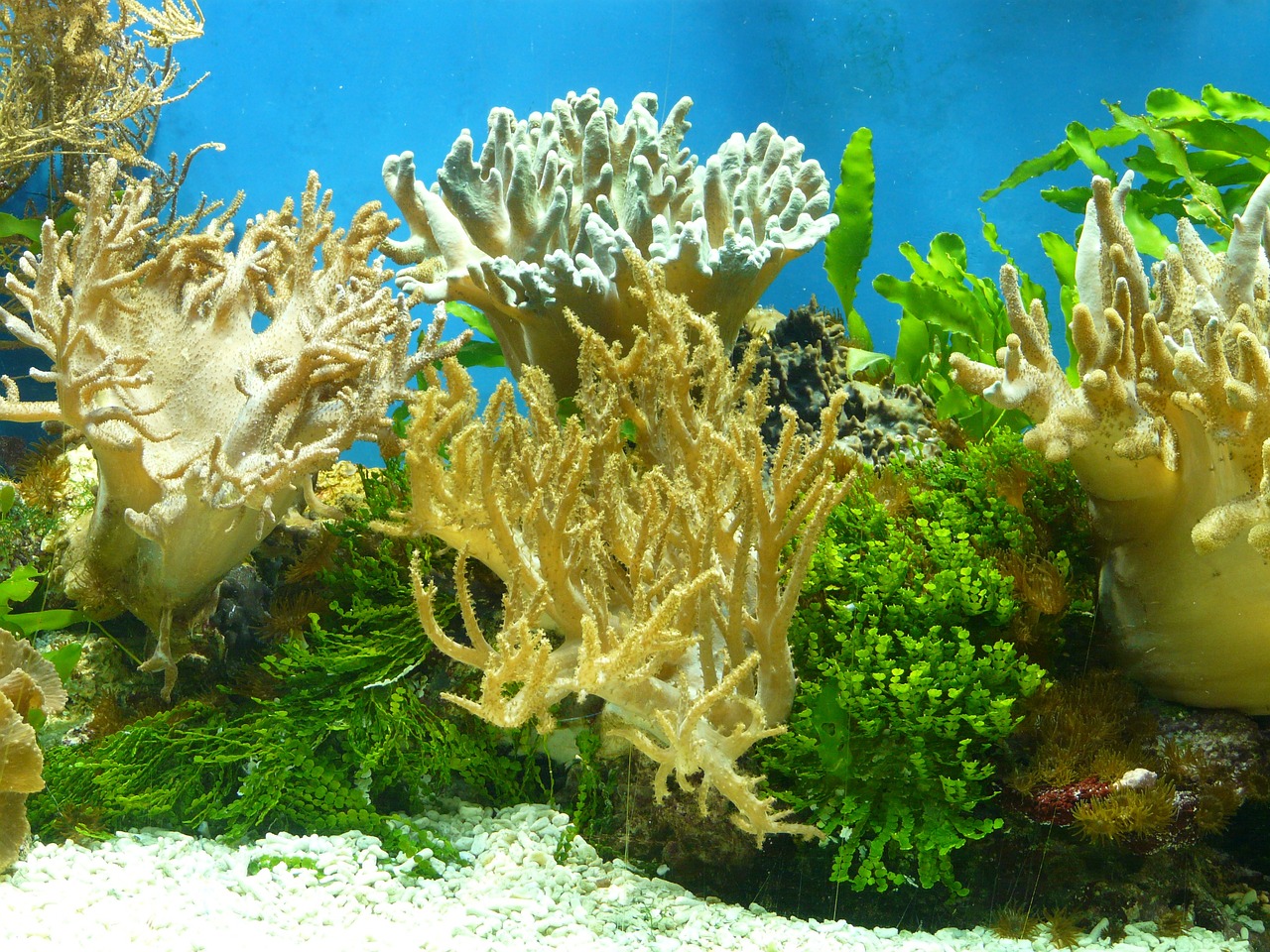Table of Contents
![]()
Calcium is a crucial element in maintaining the health and stability of aquatic environments. Whether you manage a marine reef aquarium or a freshwater tank, understanding calcium’s role and maintaining appropriate levels can significantly affect the health and vitality of your aquatic life. This article delves into the importance of calcium, its biological roles, how to manage its levels, and best practices for ensuring a thriving aquarium.
Biological Role of Calcium
For Marine and Reef Aquariums
In marine and reef aquariums, calcium plays several vital roles:
- Coral Health: Corals are foundational to reef ecosystems, and their growth is heavily dependent on calcium. Corals build their skeletons using calcium carbonate, making calcium crucial for their development. Adequate calcium levels support robust skeleton formation, promote healthy growth, and enhance the vibrant coloration of corals.
- Shellfish and Invertebrates: Many marine invertebrates, including shellfish and crustaceans, rely on calcium for their exoskeletons. Calcium is essential for shell formation, molting processes, and overall health. A deficiency can lead to weakened shells and increased susceptibility to disease.
- Algae Growth: Calcareous algae, such as coralline algae, also require calcium for their growth. These algae contribute to the stability and aesthetic appeal of reef tanks by forming encrusting mats on live rock and other surfaces.
For Freshwater Aquariums
Calcium is important in freshwater tanks as well:
- Fish Bone Health: In freshwater fish, calcium is crucial for maintaining strong bones and a healthy skeletal structure. Insufficient calcium can lead to deformities and skeletal issues.
- Plant Health: Aquatic plants require calcium for cell structure and growth. Calcium deficiencies can result in poor plant health, weak stems, and stunted growth.
Calcium Levels in Aquarium Water
Maintaining appropriate calcium levels is vital for a healthy aquarium.
Recommended Calcium Levels
- Marine and Reef Aquariums: The ideal calcium concentration for marine and reef aquariums typically ranges from 400 to 450 mg/L. This range supports coral and invertebrate health while promoting algae growth.
- Freshwater Aquariums: Freshwater aquariums generally require lower calcium levels, depending on the species. Most freshwater fish and plants thrive with calcium concentrations between 20 and 100 mg/L, although specific needs can vary.
Methods of Testing Calcium Levels
- Test Kits: Liquid reagent test kits are a common and effective way to measure calcium levels. These kits use colorimetric reactions to indicate calcium concentration and are widely available. Accurate results depend on following the instructions carefully.
- Electronic Meters: Electronic meters provide a more advanced method for measuring calcium levels. They offer real-time readings and are useful for frequent monitoring. However, they can be more expensive and may require calibration.
Calcium Deficiency and Its Effects
Calcium deficiency can have several detrimental effects on your aquarium’s inhabitants:
Signs of Calcium Deficiency
- For Corals and Invertebrates: Weak or deteriorating skeletons in corals, reduced growth rates, and color loss are common signs of calcium deficiency. Invertebrates may exhibit poor shell formation and molting issues.
- For Fish and Plants: Fish may show signs of skeletal deformities or growth problems, while aquatic plants may appear weak, with poor growth or dying leaves.
Causes of Calcium Deficiency
- Inadequate Supplementation: A lack of proper calcium supplementation can lead to deficiencies, especially in heavily stocked or actively growing aquariums.
- Imbalance with Other Water Parameters: Calcium levels can be affected by the pH and alkalinity of the water. A significant imbalance with other parameters can hinder calcium absorption and utilization.
Managing and Supplementing Calcium
Proper management and supplementation are essential for maintaining optimal calcium levels.
Calcium Supplements
- Types of Supplements:
- Calcium Carbonate: Often used in dry form or as part of a buffer system. It is slowly dissolving and can help maintain stable calcium levels over time.
- Calcium Chloride: Provides a quick increase in calcium levels and is highly soluble. It is suitable for immediate correction of deficiencies.
- Calcium Gluconate: Used less frequently but can be effective for specific needs or as part of a balanced supplementation approach.
- Application Methods:
- Direct Addition: Supplements can be added directly to the water. Ensure to follow dosing instructions to avoid rapid changes in calcium levels.
- Automated Dosing Systems: These systems provide precise and consistent calcium dosing, which is particularly beneficial for reef tanks with high demands.
Maintaining Calcium Balance
- Regular Water Changes: Performing regular water changes helps maintain stable calcium levels and overall water quality. It is crucial to use high-quality salt mixes for marine aquariums.
- Monitoring and Adjusting Other Parameters: Regularly check and adjust related parameters like pH and alkalinity. Calcium interacts with these factors, and maintaining balance is key to effective management.
Best Practices for Calcium Management
- Regular Testing and Monitoring: Test calcium levels regularly to ensure they remain within the desired range. Adjust your supplementation and maintenance routines based on test results.
- Consistency in Supplementation: Establish a regular dosing schedule to maintain consistent calcium levels. Avoid over-supplementing, which can lead to imbalances and other issues.
Case Studies and Examples
Successful Reef Aquarium Management
Many successful reef aquarium setups rely on precise calcium management. For instance, reef aquarists often use automated dosing systems to ensure stable calcium levels, resulting in vibrant coral growth and a balanced ecosystem.
Freshwater Aquarium Scenarios
In freshwater tanks, maintaining appropriate calcium levels is crucial for specific fish and plant species. For example, certain cichlids thrive in harder water with higher calcium concentrations, while delicate plants may require more controlled levels.
Conclusion
Calcium is a vital element in maintaining a healthy and thriving aquarium environment. Understanding its role, monitoring levels, and implementing effective management practices are essential for the well-being of aquatic life. By following best practices and staying informed, you can ensure that your aquarium remains a vibrant and balanced ecosystem.
Share This





Be the first to comment